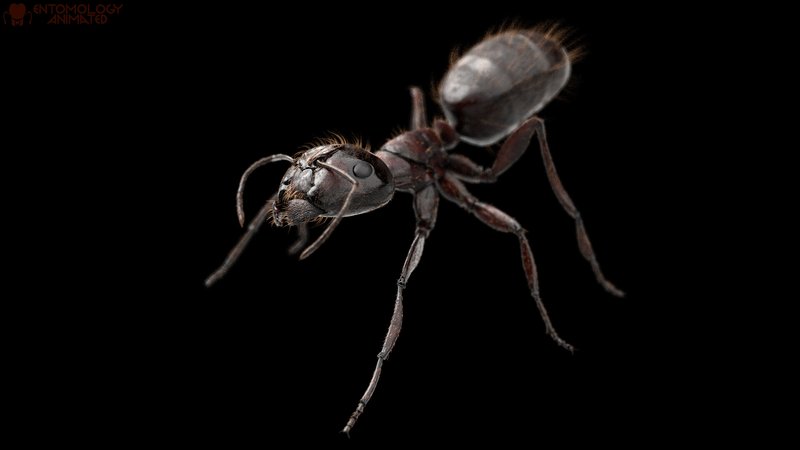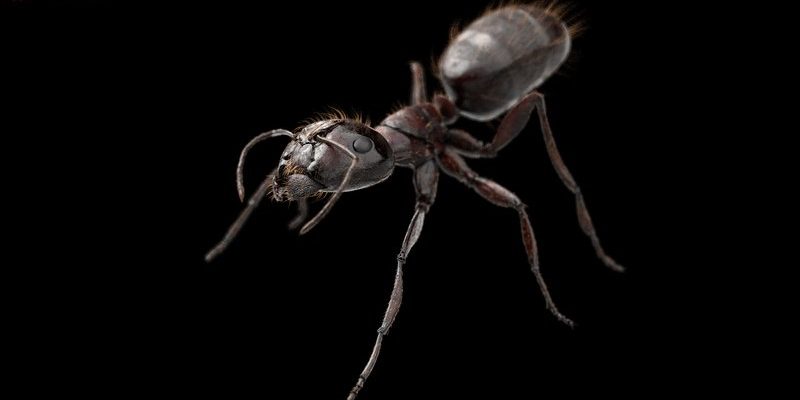
Carpenter ants belong to the genus *Camponotus*, and they are found in forests around the world. They are known for their unique nesting habits, which involve burrowing into wood. Not the kind of wood they’d naturally find laying around but often your home’s structural timber. Think of them as nature’s little construction workers—except they tend to cause more harm than good. Understanding their history can shed light on why they act the way they do and how they can impact us humans.
What are Carpenter Ants?
Carpenter ants are large, typically black or bicolored insects that can range from 1⁄4 to 1⁄2 inch in size. Unlike termites, which consume wood, carpenter ants carve out nesting sites in wood, using their strong mandibles. You might be wondering why they choose to munch on wood at all. Well, it’s primarily for creating safe spaces for their colonies. They don’t eat the wood but rather remove it to build tunnels and chambers.
Their colonies can number from a few thousand to tens of thousands of workers, which means they can do some serious damage if left unchecked. Carpenter ants prefer damp or decaying wood, so if you’ve got a leak in your home, you might just find them making your house their home. They are social insects, living in organized colonies with a clear structure that includes a queen, workers, and sometimes drones.
The Evolutionary Journey of Carpenter Ants
To understand how carpenter ants evolved, we need to go back millions of years. They belong to the Formicidae family and are believed to have diverged from their relatives around 100 million years ago during the Cretaceous period. That’s when flowering plants began to appear, creating new niches for insects. Carpenter ants adapted to building their nests in wood, an abundant resource in forested areas.
Throughout their evolution, these ants developed new traits that helped them thrive. One of the significant changes was their ability to communicate using pheromones, which enabled them to coordinate activities, find food, and defend their nests. This social structure is what makes these ants special and different from solitary insects. They even have specific roles within their colonies, such as foragers or caretakers of the young.
Interestingly, their adaptability has allowed them to spread across various ecosystems, from temperate forests to urban areas. In fact, today, there are over 1,000 species of carpenter ants worldwide. Each species has its quirks and behaviors, but they all share that instinctual drive to carve out a space in the wood.
How Carpenter Ant Colonies Function
Let’s break down how a carpenter ant colony operates because it’s just as fascinating as their evolution. Each colony revolves around a queen, who’s the sole reproductive female. Her job is to lay eggs, which the worker ants take care of. These workers are all females and are responsible for foraging for food, feeding the queen and larvae, and maintaining the nest.
When the colony establishes itself, worker ants will scout for food sources. This scavenging can lead them into your kitchens or pantries, which is something many homeowners dread. They’re particularly keen on sugary substances, so if you’ve got an open container of honey, you might find them swarming.
The growth of a carpenter ant colony typically happens in phases. In the spring, the queen lays eggs, and as these develop into adults, the colony expands. If conditions are right, the colony will produce winged males and new queens in late summer. This is when the ants engage in nuptial flights, where males and new queens take to the skies to mate. Afterward, the queens land, shed their wings, and look for new nesting sites to establish their own colonies.
Common Species of Carpenter Ants
While there are many species of carpenter ants out there, a few stand out due to their prevalence and behavior.
- Camponotus herculeanus: Commonly found in Eastern North America, this species is one of the largest carpenter ants.
- Camponotus vagus: Known for its preference for nesting in trees, it’s often spotted in forested areas.
- Camponotus nearcticus: This species thrives in the northern parts of the U.S. and Canada and is recognized by its striking color patterns.
Each of these species has adapted to various environments, showcasing the incredible versatility of carpenter ants. Their nest preferences and foraging behaviors may vary, but they all share the same fundamental nesting habits that make them notorious pests.
The Impact of Carpenter Ants on Humans
So, why does the history and evolution of carpenter ants matter? Well, it’s crucial to understand their behavior, especially if they’re invading your living space. Unlike termites, which consume wood, carpenter ants carve out spaces. This means that while they might not be eating away at the foundation of your home, they can still compromise its structural integrity.
Many homeowners mistakenly think they have a termite problem when they discover carpenter ants instead. Ignoring the situation can lead to extensive damage, as their tunneling can weaken the structural beams of your home. Plus, they’re challenging to eliminate once they’ve established a colony.
You might be wondering how to prevent these pests. The best defense is to eliminate moisture and maintain your home properly. Fixing leaks, sealing cracks, and keeping wood away from direct contact with the soil can deter them. If you suspect an infestation, it’s best to consult pest control to assess the situation and take appropriate action.
The Future of Carpenter Ants
Looking ahead, the future of carpenter ants will likely be shaped by changes in climate and habitat. As temperatures rise, these insects may expand their range further, adapting to new environments. In urban areas, their adaptability might help them thrive even more as they find new nesting materials in buildings and homes.
Additionally, researchers are studying carpenter ants to understand better how they interact with ecosystems. They play an essential role in breaking down wood and aiding in nutrient cycling, which benefits the environment. However, if their populations grow unchecked in urban areas, it could lead to increased conflicts with humans.
Ultimately, understanding the evolution and history of carpenter ants can help us coexist more harmoniously with these fascinating insects. As we learn more about their habits and preferences, we can develop better strategies for managing their presence while respecting their role in nature.
In conclusion, carpenter ants are more than just pests; they’re creatures with deep historical roots and complex social structures. Whether you find them fascinating or frustrating, their journey from the forests of the past to your home today tells a story of adaptability and survival. So, the next time you see one of these ants, remember the immense history behind their tiny bodies and the role they play in our ecosystem.

